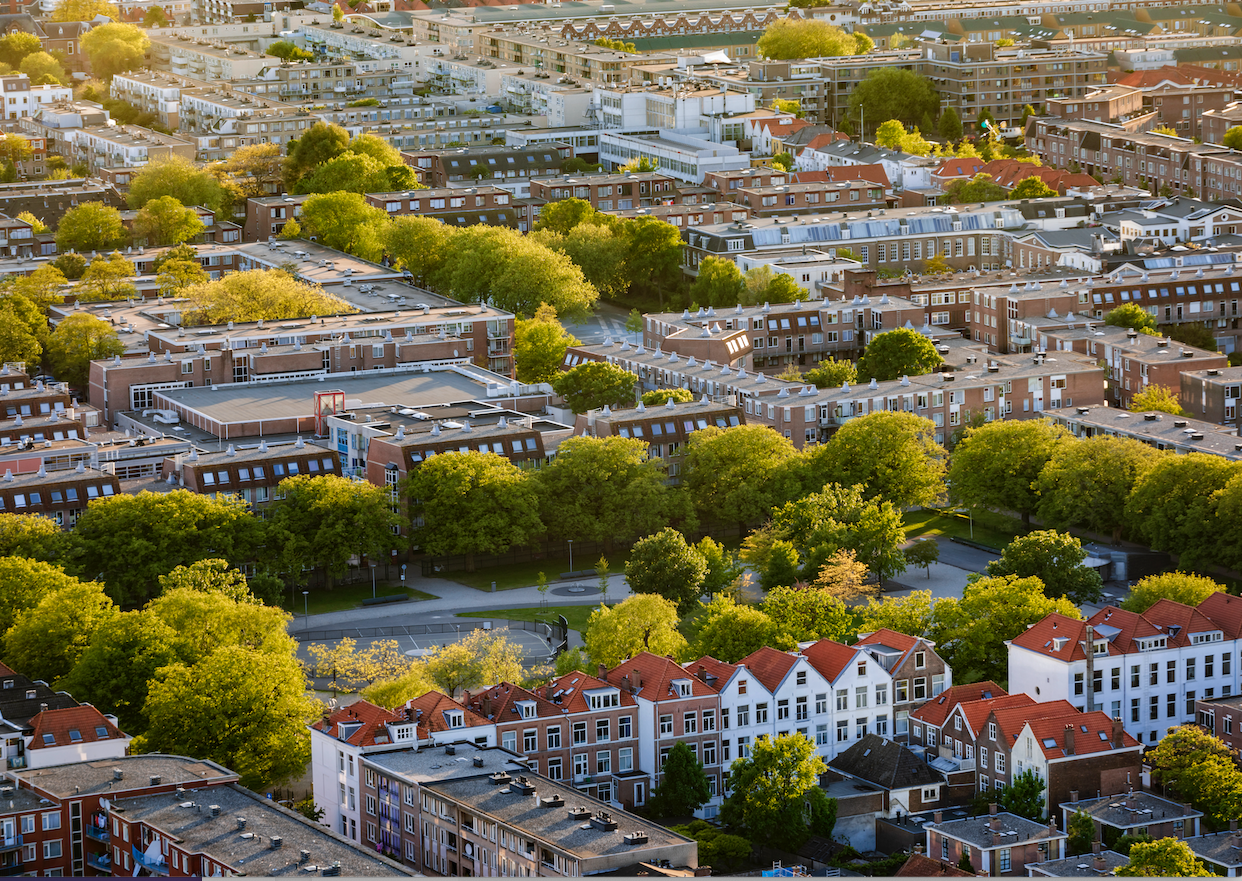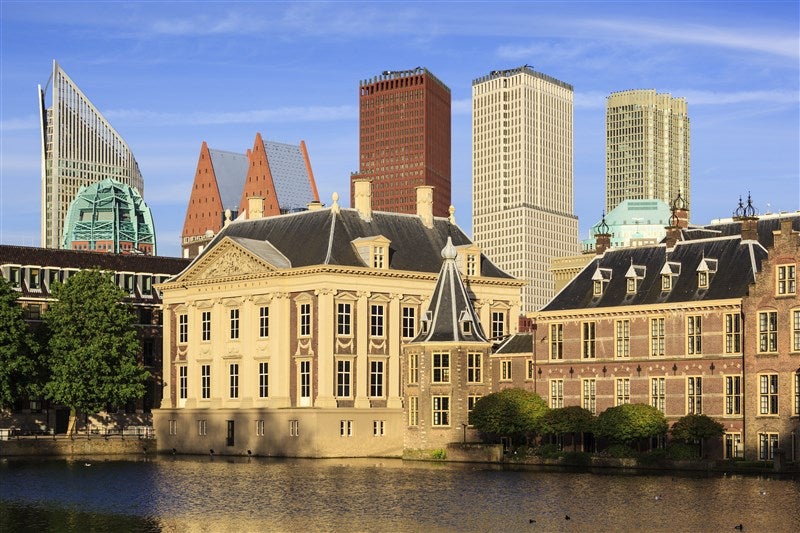Sustainability by the sea: How The Hague is angling to become the Netherland’s greenest city
With cycle-friendly infrastructure, a sustainable dining scene and eco-focused seaside resorts, the Dutch administrative capital makes a guilt-free city break, finds Jo Fernandez

Your support helps us to tell the story
From reproductive rights to climate change to Big Tech, The Independent is on the ground when the story is developing. Whether it's investigating the financials of Elon Musk's pro-Trump PAC or producing our latest documentary, 'The A Word', which shines a light on the American women fighting for reproductive rights, we know how important it is to parse out the facts from the messaging.
At such a critical moment in US history, we need reporters on the ground. Your donation allows us to keep sending journalists to speak to both sides of the story.
The Independent is trusted by Americans across the entire political spectrum. And unlike many other quality news outlets, we choose not to lock Americans out of our reporting and analysis with paywalls. We believe quality journalism should be available to everyone, paid for by those who can afford it.
Your support makes all the difference.Some cities are easier to visit sustainably than others. I’m a big fan of New York, for example, but it’s hard to be a responsible tourist when you kick off a trip with an arrival by plane. Other cities, meanwhile, make low-impact travel a whole lot easier. Take The Hague on the western coast of the Netherlands, often overlooked in favour of cooler-seeming Amsterdam.
As the Dutch administrative capital, The Hague is home to the seat of Dutch government, the royal family and the International Criminal Court – not to mention international organisations and EU institutions. Yet despite this roll-call of officialdom, it’s an easy-going city with a small-town feel that’s also the greenest in the Netherlands in both senses: 885 hectares of parkland create a pleasingly leafy urban environment, while plans are afoot to become climate-neutral by 2030.
Being eco on arrival isn’t difficult; travellers from the UK can shun flying in favour of the Stena Line Ferry from Harwich to the Hook of Holland, or the Eurostar to Rotterdam followed by a speedy 25-minute direct train to Den Haag Centraal Station. From there, visitors can get around on trams or electric and low-emission natural gas buses, even out to the nearby dune-backed coastal resorts.

Then there’s the cycling. A quarter of all journeys here are made on two wheels, with over 370km of cycle lanes and plenty of places to hire bikes from. And cementing the city’s cycle-friendly status, one of the largest bike parking garages in the world was unveiled beneath a square in front of the station last summer. Holding 8,000 bikes, the subterranean gallery-like space with backlit glass walls was designed to allow cyclists easy access to other parts of the country via train.
What about sightseeing? More sustainable than your average, Museon is a cultural institution topped with a roof dressed in green sedum (perennial vegetation) and solar panels. Exhibits continue the sustainable approach with the permanent One Planet exhibition, based on the United Nations’ 17 sustainable development goals – from overfishing to water pollution, climate change and discrimination.
It’s an easy-going city with a small-town feel that’s also the greenest in the Netherlands in both senses
Hotels aren’t always the most environmentally-friendly places to stay, but the Court Garden was the Netherland's first eco-designed hotel with a focus on sustainability. Its plant-filled, nature-hued interiors work harmoniously with its eco ethos. Energy-saving lamps and sensor lighting save electricity, as does an in-room key card energy saving device. Come morning, guests can tuck into an entirely organic breakfast produced using Fair Trade ingredients.
The Hague also has a healthy, sustainable dining scene – not just in terms of ingredients, but food and packaging waste-wise too. Just around the corner from the palatial Binnenhof parliament complex, Instock uses surplus produce collected from local supermarkets and suppliers to create dishes in its restaurant, alongside facilitating the use of surplus and imperfect produce by chefs and the hospitality industry. Elsewhere, with a pretty canal-fronting terrace on the Bierkade, De Kade serves small, seasonal dishes accompanied by an extensive biodynamic wine list using local products and suppliers.

Known as “the green city by the sea”, the Hague has two coastal resorts 15 minutes’ cycle ride from the centre. Scheveningen went from a fishing village to the country’s first seaside resort 200 years ago. Today it offers family-focused fun, with a 50m-tall Ferris wheel spinning over the North Sea and bucket loads of outdoorsy culture at the Beelden aan Zee sculpture museum’s free exhibition on the waterfront (featuring some exhibits so tiny they are hidden in the dunes).
Families also love Madurodam, a miniaturised Netherlands in a non-profit interactive theme park dotted with mini planes taking off from a mini Schiphol airport, mini tulips in mini fields and mini people representing the population’s diversity. Energy efficiency is large-scale, however, so visitors can see solar-powered windmills and panels converting daylight into electricity, as well as learn about water management.
The second resort is the nearby and smaller Kijkduin. On a serene, sandy strip called the Zuiderstrand, metres from the sea, Haagse Strandhuisjes are contemporary wooden beach houses with French doors opening onto a veranda, built from sustainable materials and using green energy, designed to maximise beach life and green living. Just south of here, the Sand Motor is an artificial peninsula created a few years ago to protect the region from rising sea levels. The natural spread of the sand protects the coast from flooding while also creating a top spot for kitesurfing in the shallow lagoon (not to mention naturism and dog walking).

Harnessing the power of coastal waters can only be a good thing for a laid-back city that already ticks many environmental boxes on land (the surrounding pancake-flat landscape is dotted with giant whirring wind turbines). Aside from offshore wind farms, Dutch solar energy start-up Oceans of Energy and The Seaweed Company, a sustainable biomass and food producer, have built a solar and seaweed farm 12km off the coast of Scheveningen. Seaweed is environmentally friendly plus nutritionally versatile, and farming it for food production has the potential to reduce pressure on our oceans’ fish stocks. Expect to see it gracing the menu in Hague restaurants.
Going Dutch may well come to mean going green, as eco initiatives here create an increasingly sustainable place to visit, providing inspiration for other cities.
Join our commenting forum
Join thought-provoking conversations, follow other Independent readers and see their replies
Comments